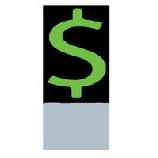
 |
|
| Financial Terms | |
| Discount factor |
|
Information about financial, finance, business, accounting, payroll, inventory, investment, money, inventory control, stock trading, financial advisor, tax advisor, credit.
Main Page: inventory control, money, accounting, business, financial, stock trading, inventory, credit, Also see related: buy home, home buyer, credit, real estate, home, homes, homebuyer, first time homebuyer, home financing, |
Definition of Discount factor
Discount factorPresent value of $1 received at a stated future date. discount factorPresent value of a $1 future payment.
Related Terms:ADF (annuity discount factor)the present value of a finite stream of cash flows for every beginning $1 of cash flow. Discounted cash flow (DCF)Future cash flows multiplied by discount factors to obtain present values. DLOC (discount for lack of control)an amount or percentage deducted from a pro rata share of the value of 100% of an equity interest in a business, to reflect the absence of some or all of the powers of control. DLOM (discount for lack of marketability)an amount or percentage deducted from an equity interest to reflect lack of marketability. discount ratethe rate of return on investment that would be required by a prudent investor to invest in an asset with a specific level risk. Also, a rate of return used to convert a monetary sum, payable or receivable in the future, into present value. fractional interest discountthe combined discounts for lack of control and marketability. g the constant growth rate in cash flows or net income used in the ADF, Gordon model, or present value factor.  PPF (periodic perpetuity factor)a generalization formula invented by Abrams that is the present value of regular but noncontiguous cash flows that have constant growth to perpetuity. QMDM (quantitative marketability discount model)model for calculating DLOM for minority interests r the discount rate Accretion (of a discount)In portfolio accounting, a straight-line accumulation of capital gains on discount Amortization factorThe pool factor implied by the scheduled amortization assuming no prepayemts. Annuity factorPresent value of $1 paid for each of t periods. Bank discount basisA convention used for quoting bids and offers for treasury bills in terms of annualized Cash discountAn incentive offered to purchasers of a firm's product for payment within a specified time Conversion factorsRules set by the Chicago Board of Trade for determining the invoice price of each Deep-discount bondA bond issued with a very low coupon or no coupon and selling at a price far below par  DiscountReferring to the selling price of a bond, a price below its par value. Related: premium. Discount bondDebt sold for less than its principal value. If a discount bond pays no interest, it is called a Discount periodThe period during which a customer can deduct the discount from the net amount of the bill Discount rateThe interest rate that the Federal Reserve charges a bank to borrow funds when a bank is Discount securitiesNon-interest-bearing money market instruments that are issued at a discount and Discount windowFacility provided by the Fed enabling member banks to borrow reserves against collateral Discounted basisSelling something on a discounted basis is selling below what its value will be at maturity, Discounted dividend model (DDM)A formula to estimate the intrinsic value of a firm by figuring the Discounted payback period ruleAn investment decision rule in which the cash flows are discounted at an DiscountingCalculating the present value of a future amount. The process is opposite to compounding. Dividend discount model (DDM)A model for valuing the common stock of a company, based on the Documented discount notesCommercial paper backed by normal bank lines plus a letter of credit from a FactorA financial institution that buys a firm's accounts receivables and collects the debt. Factor analysisA statistical procedure that seeks to explain a certain phenomenon, such as the return on a Factor modelA way of decomposing the factors that influence a security's rate of return into common and Factor portfolioA well-diversified portfolio constructed to have a beta of 1.0 on one factor and a beta of FactoringSale of a firm's accounts receivable to a financial institution known as a factor. Forward discountA currency trades at a forward discount when its forward price is lower than its spot price. Maturity factoringfactoring arrangement that provides collection and insurance of accounts receivable. Multifactor CAPMA version of the capital asset pricing model derived by Merton that includes extramarket Net benefit to leverage factorA linear approximation of a factor, T*, that enables one to operationalize the Old-line factoringfactoring arrangement that provides collection, insurance, and finance for accounts receivable. One-factor APTA special case of the arbitrage pricing theory that is derived from the one-factor model by Original issue discount debt (OID debt)Debt that is initially offered at a price below par. Pool factorThe outstanding principal balance divided by the original principal balance with the result Present value factorfactor used to calculate an estimate of the present value of an amount to be received in Pure-discount bondA bond that will make only one payment of principal and interest. Also called a zerocoupon Reported factorThe pool factor as reported by the bond buyer for a given amortization period. Single factor modelA model of security returns that acknowledges only one common factor. Two-factor modelBlack's zero-beta version of the capital asset pricing model. Discounted cash flow (DCF)A method of investment appraisal that discounts future cash flows to present value using a discount rate, which is the risk-adjusted cost of capital. Limiting factorThe production resource that, as a result of scarce resources, limits the production of goods Purchase discountsA contra account that reduces purchases by the amount of the discounts taken for early payment. Sales discountsA contra account that offsets revenue. It represents the amount of the discounts for early payment allowed on sales. discounted cash flow (DCF)Refers to a capital investment analysis technique Continuous DiscountingThe process of calculating the present value of a stream of future Discount RateThe rate of interest used to calculate the present value of a stream DiscountingThe process of calculating the present value of a stream of future ad hoc discounta price concession made under competitive pressure (real or imagined) that does not relate to quantity purchased critical success factors (CSF)any item (such as quality, customer discountingthe process of reducing future cash flows to present value amounts discount ratethe rate of return used to discount future cash risk-adjusted discount rate methoda formal method of adjusting for risk in which the decision maker increases the rate used for discounting the future cash flows to compensate for increased risk Discount curveThe curve of discount rates vs. maturity dates for bonds. Discounted cash flowA technique that determines the present value of future cash FactoringThe sale of accounts receivable to a third party, with the third party bearing Factory overheadAll the costs incurred during the manufacturing process, minus the Sales discountA reduction in the price of a product or service that is offered by the annuity factorPresent value of an annuity of $1 per period. constant-growth dividend discount modelVersion of the dividend discount model in which dividends grow at a constant rate. discount rateInterest rate used to compute present values of future cash flows. dividend discount modelComputation of today’s stock price which states that share value equals the present value of all expected future dividends. DiscountThe percentage amount at which bonds sell below their par value. Also the percentage amount at which a currency sells on the forward market below its current rate on the spot market. Discount BondA bond with no coupons, priced below its face value; the return on this bond comes from the difference between its face value and its current price. DiscountingCalculating the present value of a future payment. Discount RateThe interest rate at which the Fed is prepared to loan reserves to commercial banks. Discount WindowThe Federal Reserve facility at which reserves are loaned to banks at the discount rate. Factor of ProductionA resource used to produce a good or service. The main macroeconomic factors of production are capital and labor. FactoringThe discounting, or sale at a discount, of receivables on a nonrecourse, notification Scrap factorAn anticipated loss percentage included in the bill of material and Shrinkage factorThe expected loss of some proportion of an item during the Non-Smoker DiscountIn October 1996 it was announced in the international news that scientists had finally located the link between cigarette smoking and lung cancer. In the early 1980's, some Canadian Life Insurance Companies had already started recognizing that non-smokers had a better life expectancy than smokers so commenced offering premium discounts for life insurance to new applicants who have been non-smokers for at least 12 months before applying for coverage. Today, most life insurance companies offer these discounts. Discount RateA rate of return used to convert a monetary sum, payable or receivable in the future, into present value. Discounted Cash FlowTechniques for establishing the relative worth of a future investment by discounting (at a required rate of return) the expected net cash flows from the project. DiscountingThe process of finding the present value of a series of future cash flows. discounting is the reverse of compounding. Discounting of Accounts ReceivableShort-term financing in which accounts receivable are used as collateral to secure a loan. The lender does not buy the accounts receivable but simply uses them as collateral for the loan. Also called pledging of accounts receivable. FactorAn agent who buys and sells goods on behalf of others for a commission. FactoringType of financial service whereby a firm sells or transfers title to its accounts receivable to a factoring company, which then acts as principal, not as agent. Interest FactorNumbers found in compound interest and annuity tables. Usually called the FVIF or PVIF. Supplier DiscountAn amount deducted from an invoice by a supplier in exchange for quick payment (a typical example might be a 2% discount if paid in 10 days or the full amount of the invoice in 30 days). PV (present value of cash flows)the value in today’s dollars of cash flows that occur in different time periods. Related to : financial, finance, business, accounting, payroll, inventory, investment, money, inventory control, stock trading, financial advisor, tax advisor, credit. |